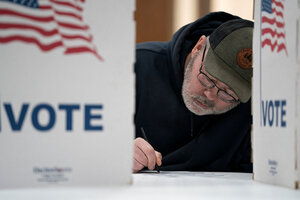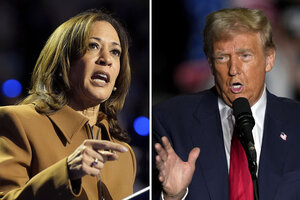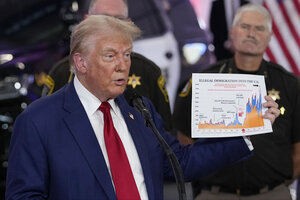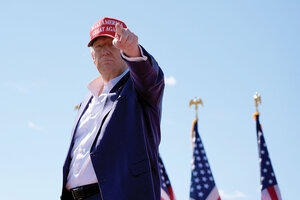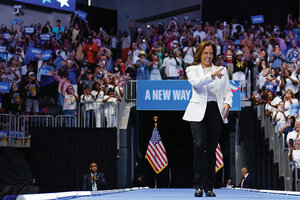Political conventions can be a bubble. Then it’s back to the real world.
| Chicago
A political convention is a big bubble, filled with energy toward what can seem like inevitable victory. That was the feeling at Chicago’s United Center last Thursday night as Vice President Kamala Harris took the stage. And that has been the feeling at every convention, Democratic and Republican, I’ve attended since 1996.
The Republican bubble – which was likewise filled with energy and optimism about a win in November – burst shortly after the convention, when President Joe Biden suddenly dropped out of the race and was quickly replaced by Vice President Harris.
The news Friday that Robert F. Kennedy Jr. was suspending his independent bid for president, and endorsing former President Donald Trump, presented yet another twist that could affect the race.
Still, this year’s Democratic convention just felt different. The Biden-to-Harris switch-up had added a new layer of emotional intensity to the proceedings – as does Democratic fear around the potential of another Trump presidency.
It has been an election season like no other. But in some other ways, the Democratic convention was utterly typical, including convention-goers decked out in full political regalia.
Tina Duryea, an artist from Norwalk, Connecticut – and a convention delegate – sported “Kamala wear” she designed herself, a dress covered with images of the VP and a jacket featuring what she calls “sheroes,” or female heroes. Her take on the convention?
“I’m calling it a four-day rock concert and family reunion and the greatest experience of my life,” Ms. Duryea says. “This has been amazing.”
OK, so Beyoncé didn’t appear on stage Thursday night, as was widely expected, for a live performance of Ms. Harris’ campaign anthem, “Freedom.” Nor did Taylor Swift, despite reports that her plane had just touched down at O’Hare Airport. But we did get Pink – and Stevie Wonder and John Legend the night before.
As much as polls show Ms. Harris with momentum, the race is neck and neck. Over lunch Thursday, I asked a European ambassador to the U.S. who he thought had the edge.
“I still think Trump,” said the diplomat, who also attended the GOP convention. Ms. Harris, he says, must convince Americans she has a solid plan for the economy.
Now the hoopla is over. Onward to the Trump-Harris debate Sept. 10 – and Election Day, Nov. 5.
The Monitor has been pleased to provide on-scene coverage from both conventions, supplemented by other Monitor reports adding context and insight.
Here are my colleague Cameron Joseph’s five takeaways from the Democratic convention. I wrote about how Ms. Harris has found her voice. Cameron also wrote about Robert F. Kennedy Jr.’s exit from the race and about how the Gaza protests weren’t as disruptive as feared. We published two stories centered on running mate (and former teacher) Tim Walz, one on his political record and another on the role of education in the race.
Early in the week, I wrote about the newly reenergized Democrats and (with Cameron) the mixed emotions around President Biden’s convention appearance Monday night.
Our coverage from the Republican National Convention in Milwaukee also stands up.
The Monitor’s Story Hinckley, along with Cameron, wrote about Republican unity and strains. Cameron also covered how some Republicans see a religious dimension in former President Trump’s “near miss” and examined whether the assassination attempt changed him. I wrote about the rhetorical challenge for Democrats after the Trump shooting.
Sophie Hills and Caitlin Babcock covered how the GOP platform shows how Mr. Trump has dramatically reshaped the GOP. Simon Montlake profiled JD Vance, Trump running mate and MAGA heir. And Story described how Republicans could taste victory at their convention. But then, Mr. Biden was still the presumed Democratic nominee.
Expect more twists and turns to come.









